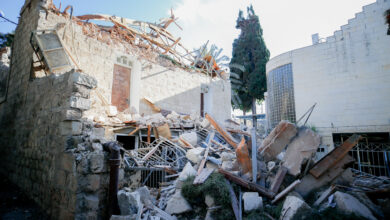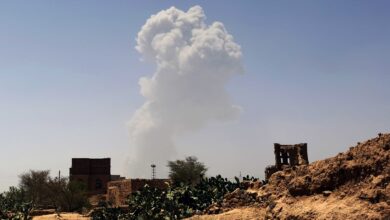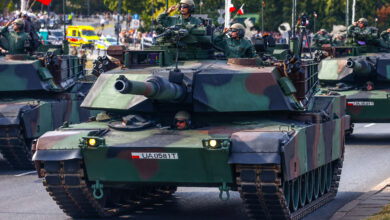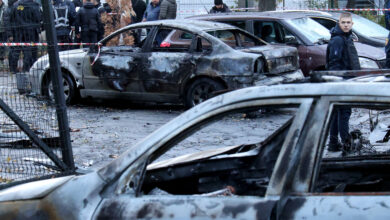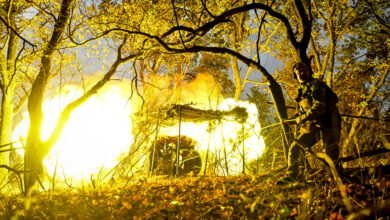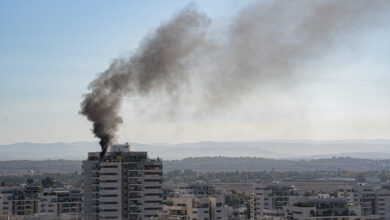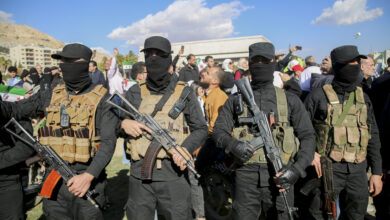
By Lt. Gen. Richard Natonski, USMC (ret.), and Harry Hoshovsky, JINSA Gemunder Center for Defense and Strategy
Lebanon has experienced a wave of mass protests over the last few months unlike anything since the 2005 Cedar Revolution that ended Syria’s 29-year military occupation. These protests have illustrated a rare moment of post-sectarian politics with demonstrators calling for the establishment of an independent, technocratic government that focuses on fixing the current economic crisis and improving electricity, water, and healthcare services.
Unfortunately, there’s one entity that the Lebanese public has no control over and which can undo any chance of a sustainable economic recovery under a competent future government: Hezbollah with its missiles and rockets still pointed at Israel.
Last month, the Israel Defense Forces conducted a military drill designed to counter a Hezbollah infiltration into northern Israel. In commenting on the exercise, an IDF spokesperson highlighted that Hezbollah could “rely on tension with Israel to help [it] limit the level of tension in Beirut.”
Hezbollah’s sponsor, Iran, is another element in play. On November 17, Tehran was also swept up in widespread protests wherein participants called for the downfall of the Islamic Republic. Since then, approximately 1,500 people have been killed in the crackdown, including 400 women, purportedly on Supreme Leader Ali Khamenei’s direct orders.
History has many examples where totalitarian regimes have tried staving off internal discontent by creating an external threat that unifies its domestic supporters. One day after an alleged Israeli airstrike killed three Iranians in Syria, a senior adviser to Khamenei warned that the strike could not “pass without a response,” adding that Hezbollah would attack Israel if the IDF targeted Lebanon.
It’s long been surmised that Iran could deploy Hezbollah against Israel as either a first-strike force or in response to an Israeli attack on Iranian nuclear facilities. It is for this reason that Tehran has spent the last 13 years systematically expanding its proxy’s missile and rocket arsenal numerically and qualitatively.
Throughout the Second Lebanon War, Hezbollah fired an average of 116 rockets per day. This continued rocket fire effectively paralyzed large areas of northern Israel and forced over 650,000 residents to seek safety in the south. As of a few years ago, the IDF believed that the terrorist group could launch daily salvos of at least 1,200 missiles into Israel. Unlike 2006, when Hezbollah’s arsenal was predominantly composed of short-range Katyushas, it now has long-range systems such as Syrian M-600s, Iranian Fateh-110 surface-to-surface missiles, as well as Shahab-1 and Shahab-2s (Iran-made Scud variants) that can cover most of the Israeli heartland and accurately strike key IDF infrastructure.
It bears repeating that the Second Lebanon War had devastating effects on both sides of the Blue Line. In Lebanon, over 10,000 homes were destroyed with 22,500 others listed as badly damaged. On the Israeli side, 901 Hezbollah rockets damaged over 9,000 homes and apartment buildings while outright destroying 2,000.
Today, Hezbollah has over 120,000 rockets and missiles which are deeply embedded in the civilian infrastructure of Lebanon. Thus, if war does occur, the next conflict will be several orders of magnitude more devastating than its predecessor.
Consequently, it is imperative to recognize that Hezbollah’s missiles and rockets – when viewed collectively – are akin to weapons of mass destruction. Their continued existence represents a direct threat to every Lebanese and Israeli citizen.
It is time that they were removed before Hassan Nasrallah or Khamenei can use them to deadly effect.
Thankfully, the United Nations’ removal of Syria’s chemical weapons offers a recent, albeit slightly imperfect, model for showing how this challenging endeavor can be performed.
In 2013, Washington and Moscow reached an agreement to remove 1,290 metric tons of Syria’s declared components necessary for producing chemical weapons. A year later, the Organization for the Prohibition of Chemical Weapons confirmed the destruction of that materiel. However, as subsequent chlorine and sarin attacks by the Assad regime tragically demonstrated, not everything got caught in OPCW’s net.
Those attacks highlight two key failings in the original deal. First, it lacked enforcement mechanisms such as automatic sanctions or the use of U.N.-authorized military force should violations be detected. Second, the OPCW relied on the Syrian government’s declaration about what constituted its chemical weapons stock, leaving many skeptical that the list was complete.
Transposing this model to Hezbollah’s missiles would obviously require addressing those and other issues.
For too long, successive Lebanese premiers have tolerated Hezbollah’s missiles because they provided some form of deterrence against Israel; however, their continued presence all but ensures that a future war is inevitable.
However, now that Shia support for Hezbollah is finally fracturing, Washington can offer Beirut an economic lifeline that has the express goal of curtailing Hezbollah’s influence on Lebanon’s social, economic, and political spheres. Already, Lebanese Sunnis are concerned that Hezbollah’s support for Hassan Diab’s nomination as the new prime minister could bring about further international isolation.
Those fears do not have to materialize if Diab can be convinced that his new cabinet should not only exclude Hezbollah, but that Lebanon’s future economic prosperity fundamentally depends on the systematic removal of the Iranian proxy’s missile and rocket arsenal.
 Lt. Gen. Richard Natonski, USMC (ret.), is former Commander, U.S. Marine Corps Forces Command, a former observer to U.N. peacekeeping operations in the Middle East and a Distinguished Fellow at the Jewish Institute for National Security of America (JINSA).
Lt. Gen. Richard Natonski, USMC (ret.), is former Commander, U.S. Marine Corps Forces Command, a former observer to U.N. peacekeeping operations in the Middle East and a Distinguished Fellow at the Jewish Institute for National Security of America (JINSA).
 Harry Hoshovsky is a Policy Analyst at JINSA’s Gemunder Center for Defense and Strategy.
Harry Hoshovsky is a Policy Analyst at JINSA’s Gemunder Center for Defense and Strategy.
All views and opinions expressed in this article are those of the author, and do not necessarily reflect the opinions or positions of The Defense Post.
The Defense Post aims to publish a wide range of high-quality opinion and analysis from a diverse array of people – do you want to send us yours? Click here to submit an Op-Ed.


